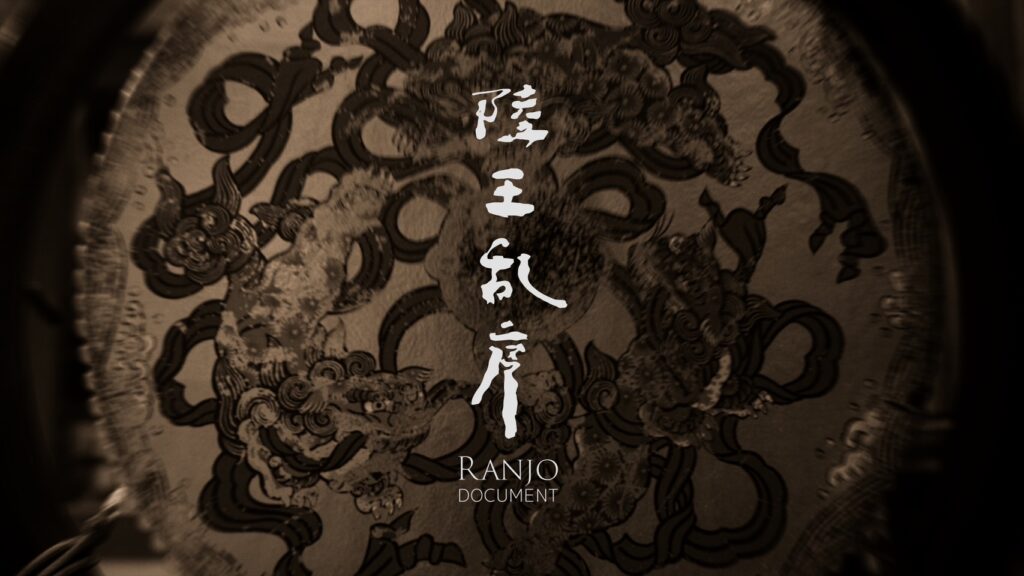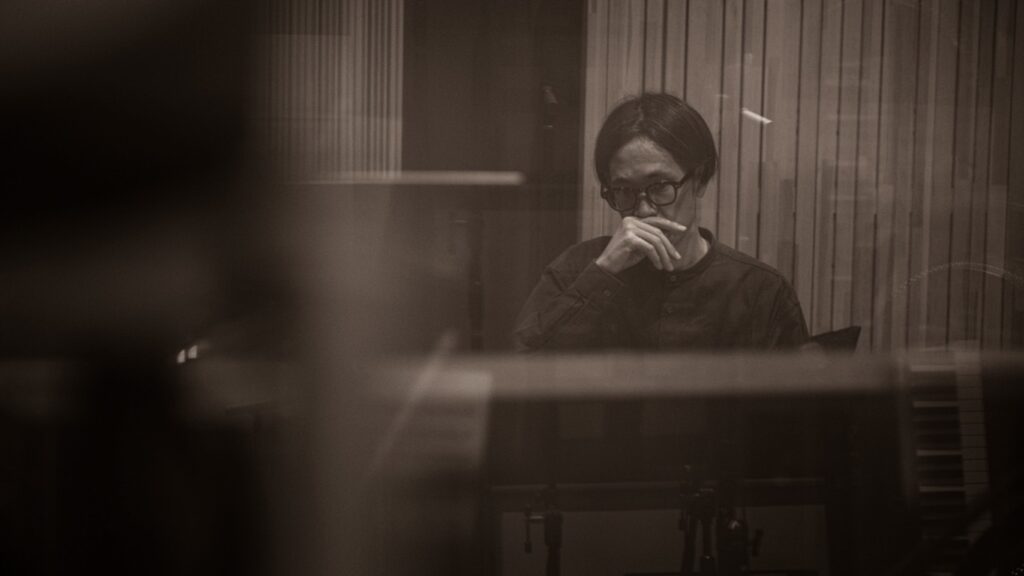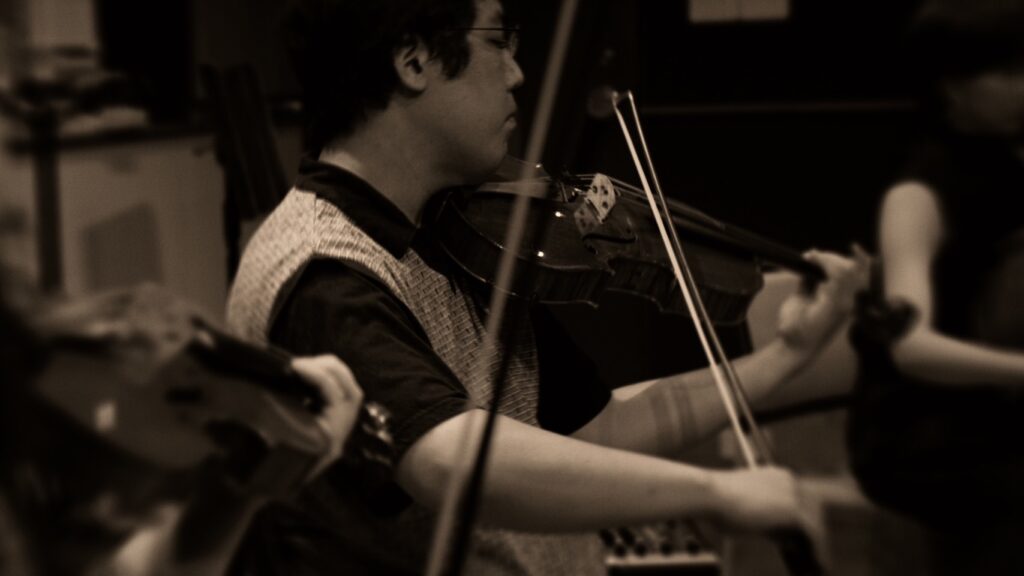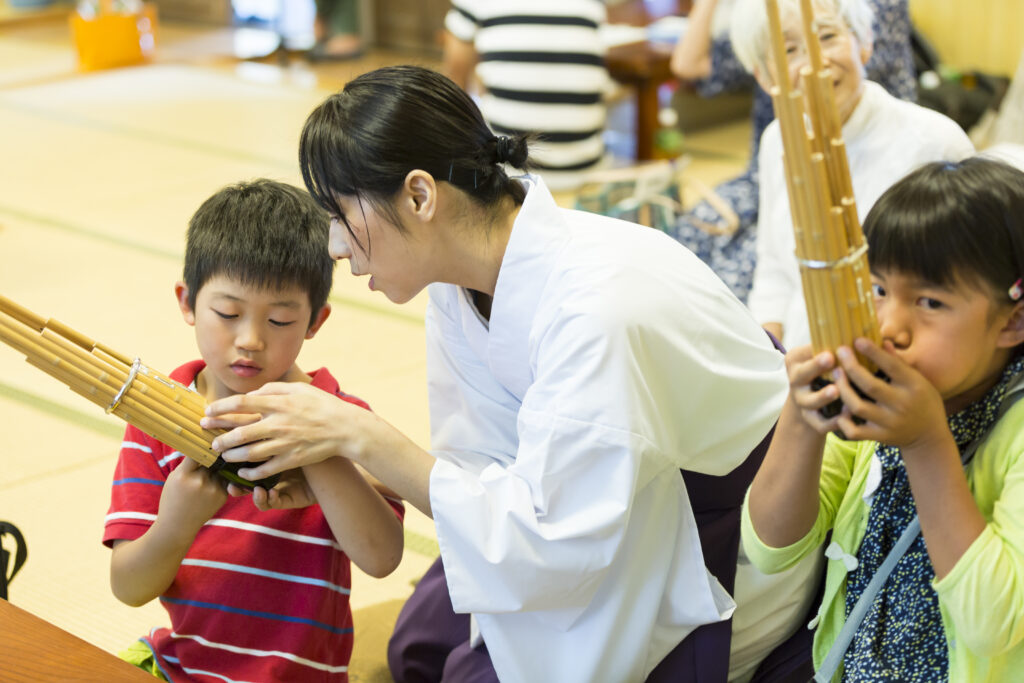
Previously,
I mentioned the fusion of Gagaku and Western music in Silence, followed by the dynamic epic music and Gagaku integration in the Hollywood production SHOGUN. It's safe to say that these two fusions paved the way for the creation of the modern Gagaku piece Ranjo, a new work born from this overlapping of styles.
I’d like to delve deeper into Ranjo, a composition that reflects Taro Ishida’s accumulation of diverse intersections with Gagaku.
New Release Ranjo (3 min 24 sec)
This bold new arrangement of the classical Gagaku piece Ryō-ō Ranjo incorporates traditional Gagaku instruments alongside strings, synthesizers, and piano. By tuning the Western instruments to Gagaku’s unique pitch of 430Hz (compared to the standard 440Hz of Western classical music), the composition achieves a sublime, majestic, yet dynamic and dramatic soundscape.
Taro Ishida has been composing with Gagaku elements for nearly a decade. His involvement as the chief music arranger for the highly acclaimed Hollywood series SHOGUN—which earned the most Emmy nominations and wins in 2024—directly influenced this project. Ranjo marks the first piece in his new modern Gagaku style, dubbed "Taro-style Gagaku."
Ryō-ō Ranjo is a segment of the ancient Gagaku performance Ryō-ō, a dance piece from Tang Dynasty music (known as Tōgaku in Japan). The dance tells the story of the handsome Prince Lanling of Northern Qi, who wore a mask to conceal his beauty when going into battle. The Ranjo section, approximately 11 minutes long, is the "entrance dance" performed as the dancer takes the stage. The constant beats of the drums and gongs, coupled with the ethereal tones of the Ryūteki flutes, create a mystical, solemn, and otherworldly atmosphere.

Challenge 1: Merging Gagaku with Western Strings
The original Ranjo begins with percussion, followed by Ryūteki playing in a canon format, with each group joining in at delayed intervals. This unique overlap in Gagaku evoked for Taro the imagery of a military advance. He sought to express human emotion by layering strings—violin, cello, and viola—into the composition. The players were asked to "battle" the Gagaku instruments, resulting in a dramatic, cinematic sound, where the strings add clarity and depth to the ethereal, wind-like quality of Gagaku.
Challenge 2: Tuning the Strings to Gagaku’s 430Hz
Western music typically uses a 440Hz pitch, whereas Gagaku is tuned to 430Hz. Previous collaborations between Western and Gagaku instruments have always involved adjusting the Gagaku instruments to match Western pitch. In this piece, however, the string players tuned to 430Hz. This adjustment imbued the Western instruments with an organic resonance, blending seamlessly with Gagaku and creating a previously unheard soundscape.
The piece also introduces hichiriki and shō, which aren’t present in the original Ranjo, enveloping the work in a divine light. The addition of piano and synthesizer brings a contemporary, almost mechanical essence to the piece. Ranjo thus preserves the profound value of the original work, while also showcasing Taro’s modern, innovative touch.

The imagery of "advancing" in Ranjo resonated with Taro as a metaphor for a new era of Gagaku.
Japanese traditional music, including Gagaku, faces challenges such as a lack of successors and financial support. Taro believes that the future of Gagaku lies in integrating it into soundtracks for films, TV shows, and video games. By doing so, Gagaku can naturally reach contemporary audiences, sparking interest in this ancient art form.
Taro’s journey began with the experimental fusion of Gagaku and classical music in the 2023 Silence project. This was followed by his work on SHOGUN, where Gagaku merged with the grand, epic soundscapes of Hollywood composers like Atticus Ross. These experiences reinforced his belief in the power of 430Hz tuning and the potency of layering Gagaku with modern music.
Taro spent months interpreting Ranjo, listening to hundreds of performances by the Gagaku ensemble Reigakusha. After much deliberation, and even scrapping the entire composition to start over, the final piece emerged after several months of effort. The result is a sound that feels otherworldly yet deeply human.
In Taro’s words, "By adding strings to Gagaku’s mist-like, pervasive sound, the music gains direction, reaching into the hearts of listeners."
Ranjo opens new possibilities for Gagaku as a soundtrack for modern media. And this is only the beginning. Taro plans to continue producing new tracks and albums, with concerts scheduled for January 12, 2025, at the Nasunogahara Harmony Hall and March 9, 2025, at Waseda Scott Hall.
Indeed, Ranjo is just the start of a new journey for Gagaku.
On October 9, a behind-the-scenes documentary was released, showcasing the making of Ranjo. Watch the limited-release version here.
"Ranjo is the beginning of my work to connect Gagaku with the future. While there have been examples of classical and Gagaku performances in contemporary music, my goal was to create a soundtrack that the general public can easily listen to. I hope this track will inspire people to engage with Gagaku, perhaps even leading to children picking up the Ryūteki after encountering it in a movie, show, or game."
I hope you're excited for the November 1 release! In the next update, we’ll explore the fascinating world of Gagaku instruments, particularly the 430Hz tuning, and the allure it holds.

Written by Atsuko Aoyagi / ao.Inc.
#DailyThoughts #JapaneseTraditionalMusic #Composition
#Gagaku #ComposingGagaku #NonMusic #GagakuPerformance
#FilmMusic #CinematicMusic #SpatialMusic #GagakuStories #SideNotes
#WhyIs #Gagaku #Layer #AndMysterious